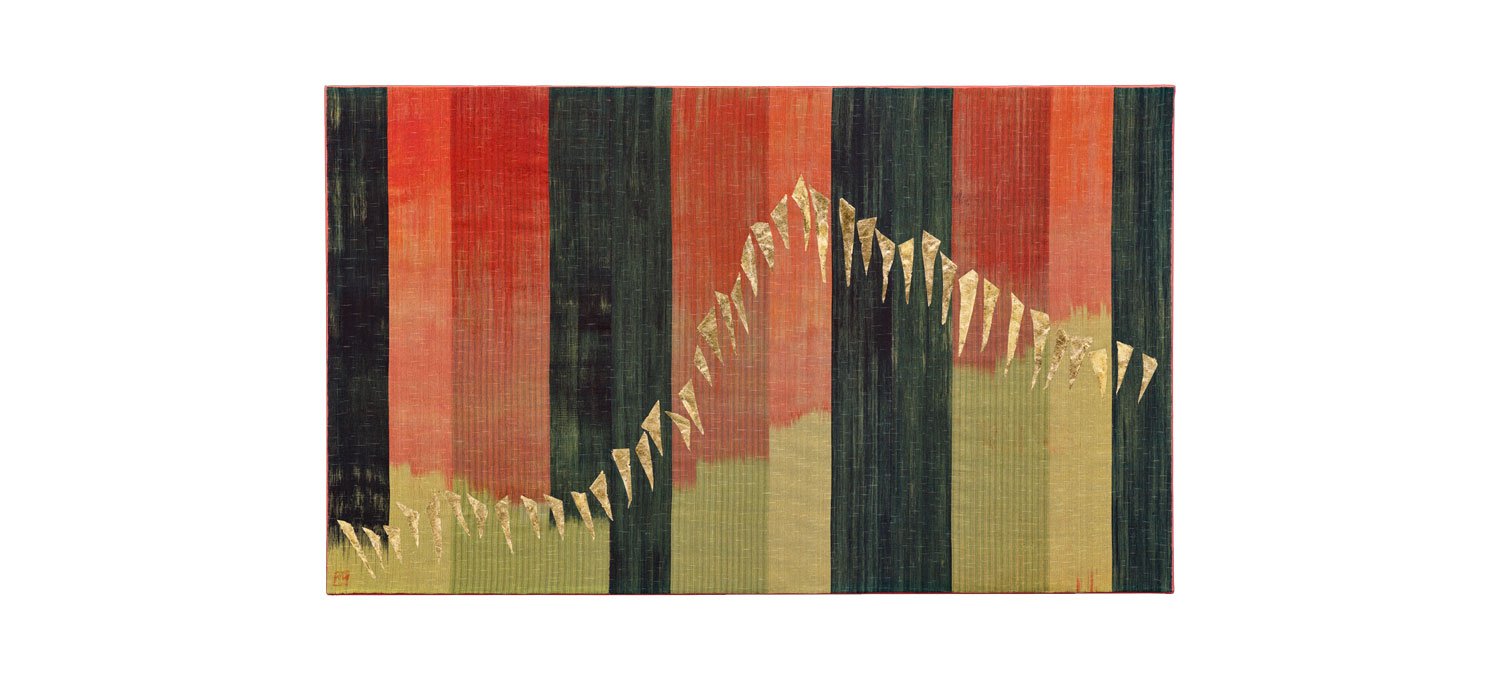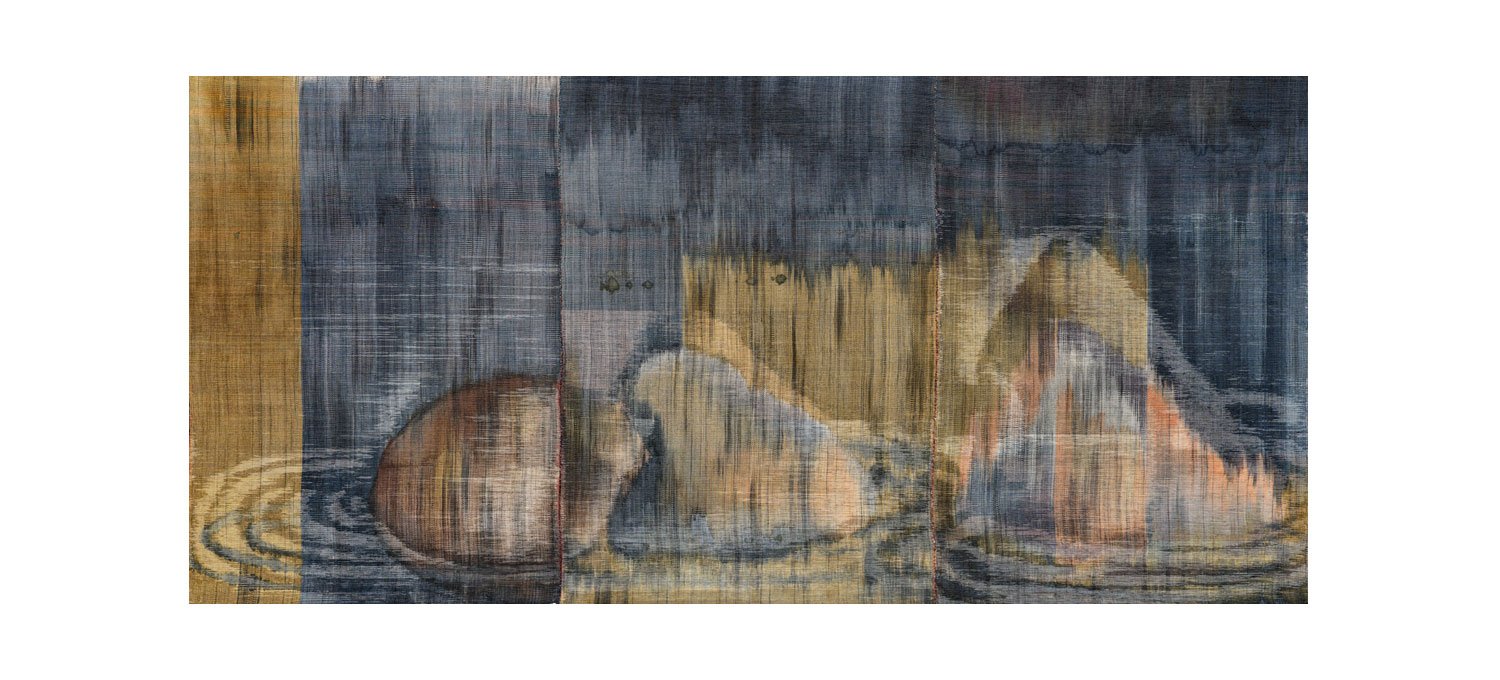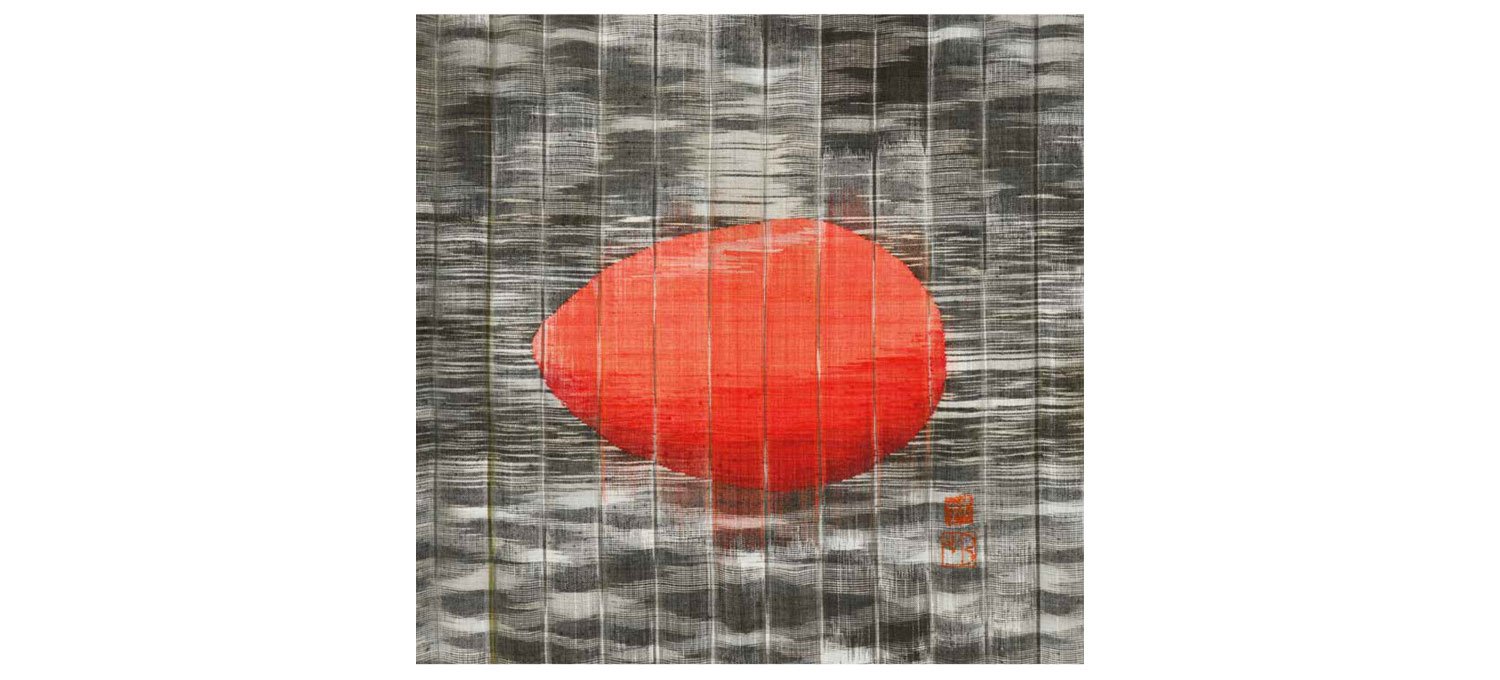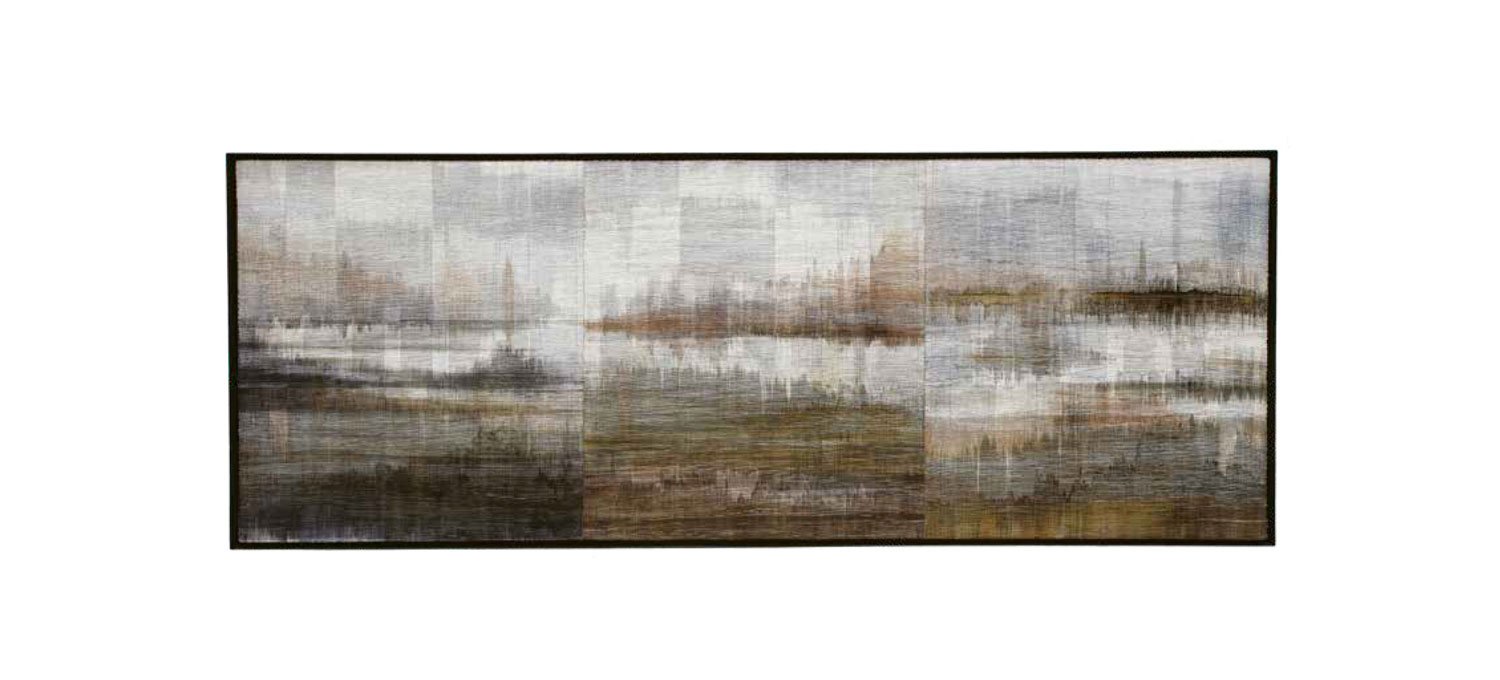2023
Statement: The Warp is My Canvas
My work in the studio involves tying, dyeing, weaving, drawing, and painting. I work in layers, and ikat allows for colors and patterns to build within the warp and weft. Working with ikat, I can layer and bundle together the ideas and sketches gathered over time which surround my studio walls—particularly when using double ikat combining ikat in both the warp and weft. I watch the design emerge while weaving: an idea hovering, was embedded and hidden in the tied sections along the length of the warp.
I think often about the idea of resist as ikat’s creative potential. On or off the loom, it is in acting with or reacting to the resistance potential of materials (tight or loose ties, types of tie, mordants, type of dye or pigment) that I make my art, find my voice, my gesture, and my way of engaging with the world. Which is to say to lock in a design, encode thread with the memory of an image or a motif, and to push against the need to control the outcome. Ikat as a technique holds secrets as it teaches me that at a certain point it is a team effort—my idea and the technique’s possibilities.
Born in New York City, I was trained to weave in Japan forty years ago. I still work on a Japanese kimono loom, and though I have lived in the American Southwest for thirty years, my sensibilities and my work lean in both directions toward the East and West, as I use both of these ancient, traditional patterns while constructing more contemporary artwork. I remember vividly that moment over forty years ago, traveling in a train in Japan with my sensei, master weaver Tomohiko Inoue, and looking out the window at the sun setting behind Fuji-san thinking, “That is why I want to learn to weave. I want to paint in silk.” When working on In Stillness, I tied bands of the white warp with raffia tape, placed the tied warp in a light-gray dye bath and, using a warp shifter on the back of my loom, created a checkerboard of gray and white. Onto this patterned warp I painted with additional dye the greens and browns which set the mood for the weft ikat to weave in a landscape of space and mystery.
Since the work and time in ikat is spent in tying knots—often many knots!—I do not like to weave the same piece twice, and each weaving is a unique work. The appeal and engaging result is flexibility, continual growth as an artist, exploration and problem solving. When tying a knot of resist on thread, this act encodes the thread, locking in the mark of design which carries memory, an historical marker, a global or locally identifiable story which is passed down culturally in the woven membrane or fabric.
My own challenge with ikat is when the threads resist, push back, push me forward as an artist while keeping me connected to the web of woven history. The lines, the graphics, the voice of each piece astonish me with a vitality, a freedom to break rules. Into and onto this surface I paint, stain, rub, let leak and ooze, fuss and finesse with pigment, soy milk, sumi ink, and dye. Embedded messages, unwanted lessons, fading habits, new materials with their surprising results now play inmy work as I am tossed time and again up against that hurdle between weaving and painting. I give myself free rein to leap into the unknown.
Exhibitions
Ikat: A World of Compelling Cloth, March 9 - May 29, 2023, Seattle Museum of Art
Indigo at the Denver Botanic Gardens, July 2 - November 5, 2023, Denver Botanic Gardens
IKAT: A world of Compelling Cloth, March 9 – May 29, 2023, Seattle Museum of Art
Polly Barton, In Stillness
IKAT TODAY (from Roots and Routes of a Textile Technique Global Ikat: The David Paly Collection)
In past decades, the centuries-old technique of ikat has taken a new direction through the work of contemporary artists. Since the Fiber Art revolution of the 1960s and 70s, it has been used to create non-functional artworks that push the technique through the incorporation of unconventional materials and new motifs. Alongside this artistic development, ikat, handwoven or emulated through print or machine-made constructions, has become an internationally popular look for soft furnishings. This wealth of present-day expression, a successor to successive ages of textile-making across the globe, demonstrates the extraordinary ability of ikat to continually shapeshift and delight.













